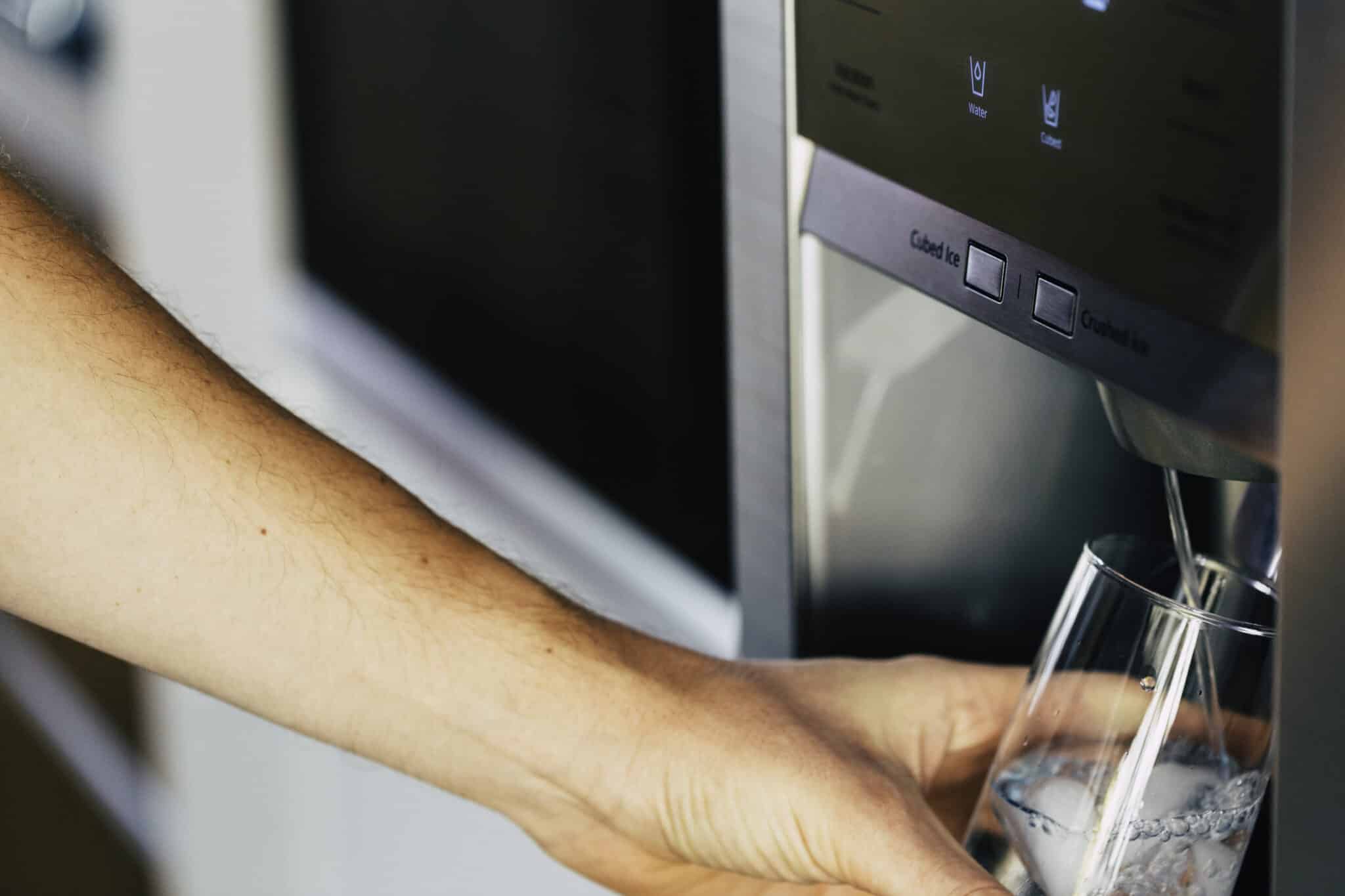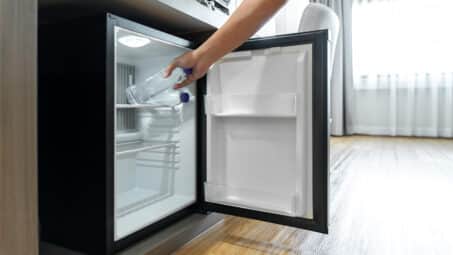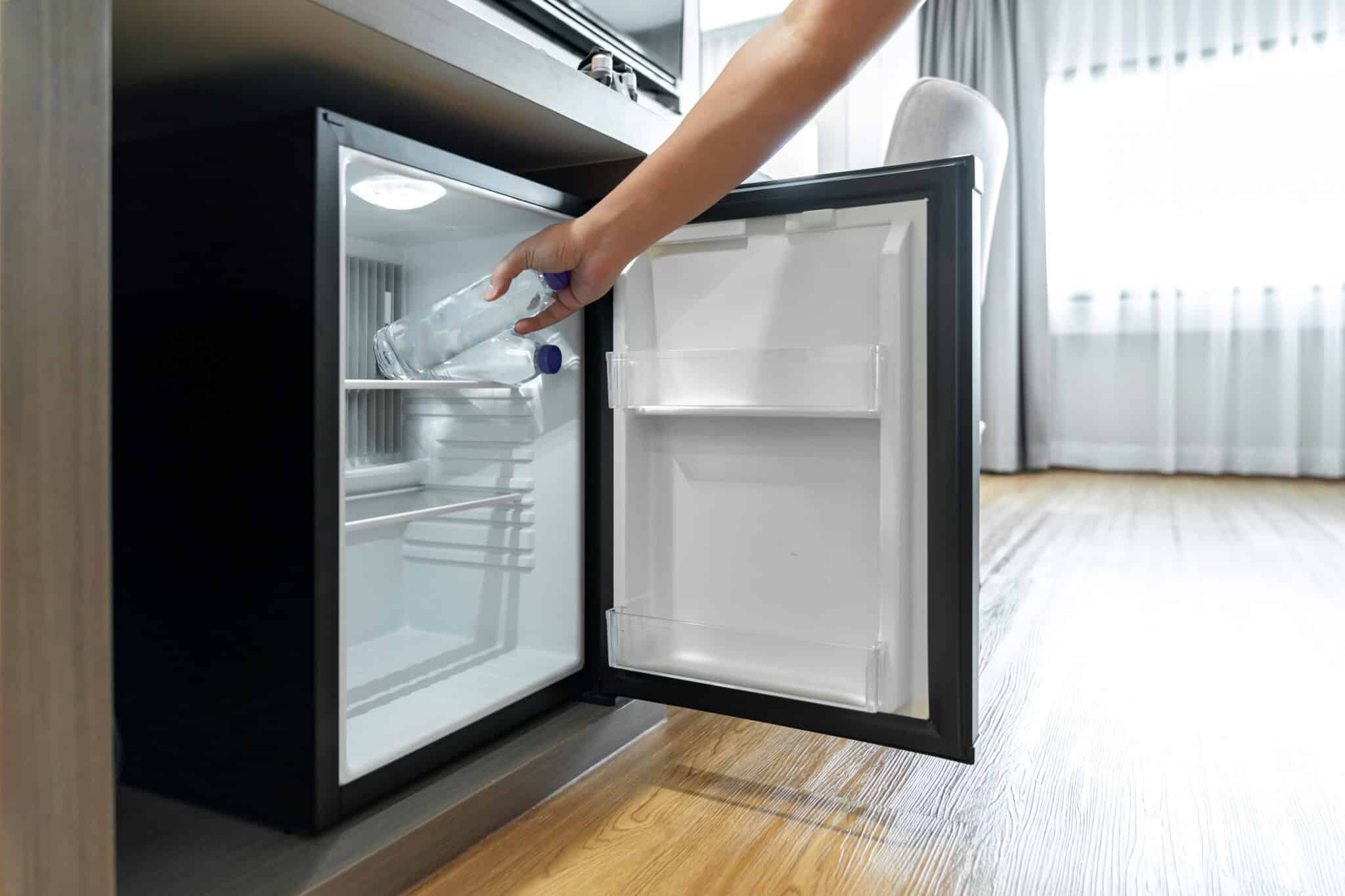Changing your fridge filter is one of the simplest ways to keep your water clean and your refrigerator working at its best. Refrigerator water filters trap contaminants like chlorine, rust, and sediment, ensuring you get fresh, great-tasting water.
However, if you don’t replace them regularly, these fridge filters affect water quality and appliance performance.
Here’s everything you need to know about when and how to change your fridge filter:
When to Change a Refrigerator Water Filter
Knowing when to replace your refrigerator water filter helps keep your drinking water clean and fresh. Most manufacturers recommend changing the fridge filter around every six months, although some factors may mean you’ll need to replace your filter more often.
Failing to replace refrigerator water filters on time can lead to clogged filtration systems. Additionally, regularly replacing filters protects your fridge from unnecessary wear and tear caused by sediment buildup.
Timing may vary for advanced systems like osmosis water filters or whole-house filtration setups, so always refer to your product manual for guidance.
Signs You Need to Replace Your Water Filter
Ignoring your fridge filter can lead to poor water quality and even damage to your appliance. So, knowing the signs of a failing filter ensures your water filtration system works as intended.
Below are some common indicators that it’s time for a water filter replacement:
Strange Taste or Odor
If your water or ice starts to taste or smell off, it’s a clear sign your fridge filter has reached the end of its life. Filters remove impurities like chlorine and bacteria, but can’t do their job once they’re saturated.
Cloudy or Discolored Water
Water that appears cloudy or has an unusual color often indicates a clogged filter. Sediment and other contaminants build up in the filtration system over time, reducing its ability to provide clean, clear water.
Slower Water Flow
If you notice a drop in the speed of water dispensing from your fridge, that may mean your fridge filter is clogged. Restricted flow means the filter is working harder than it should and you should replace it.
Black Specks or Residue
Small black particles in your water or ice cubes are often bits of carbon from the fridge filter itself. This happens when the filter is too old or is improperly installed.
Filter Indicator Light
Most modern refrigerators come with a filter light that turns on when it’s time for a fridge filter replacement. If you see this light, don’t ignore it—it’s a simple yet effective reminder to change the filer.
Keeping an eye out for these signs ensures your refrigerator water filtration system continues to provide safe, clean, and great-tasting water year-round.
Impacts of Not Changing Your Fridge Filter
Not replacing your refrigerator water filter can lead to a range of issues affecting your health and your appliance. Over time, filters become clogged with contaminants like dirt, rust, and bacteria, reducing their ability to purify your water. This can result in unpleasant tastes, bad odors, or even harmful particles in your drinking water.
Beyond impacting water quality, an old filter can restrict water flow, putting unnecessary strain on your refrigerator’s system. This can cause leaks, reduced efficiency, or costly damage to your appliance.
Regular filter replacements are key for maintaining clean drinking water, protecting your fridge, and ensuring the longevity of your water filtration system.
Types of Refrigerator Water Filters
Understanding the types of refrigerator water filters can help you know the right one for your appliance. The three most common options—twist-on, push-in, and inline filters—are designed to fit specific fridge models and water filtration systems.
- Twist-On Filters: These attach directly to the filtration housing and lock in place with a simple twist. You’ll commonly see these in brands like Whirlpool and GE.
- Push-In Filters: You install this kind of filter by pushing it into a designated slot, often secured by a spring or locking mechanism. Many fridges from Frigidaire and other modern brands tend to use push-in filters.
- Inline Filters: Inline filters connect directly to the water line behind your refrigerator, which is a great option for appliances without built-in filter slots.
- Osmosis Water Filters: Using reverse osmosis technology, these filters remove a wide range of impurities, providing ultra-clean water. These are typically installed as a separate system.
- Whole-House Water Filters: As the name implies, these filters treat water at the source for the entire home, ensuring clean water flows through all appliances, including refrigerators. These are larger upgrades that usually require professional installation.
Knowing your fridge’s compatibility is crucial when choosing between these options. Check your owner’s manual to confirm which refrigerator filter works best for your model and water filtration needs.
How to Replace a Twist-On Refrigerator Water Filter
Twist-on refrigerator water filters are common in many brands, such as Whirlpool and GE. The main advantage of these filters is easy replacement, so you can quickly get back to enjoying clean, fresh water. Before starting, check your fridge model and find compatible filters, like the GE MSWF SmartWater Filter or Whirlpool Twist-On Filter.
Steps to Replace a Twist-On Refrigerator Water Filter
- Locate the Filter: Typically found in a drawer, on the fridge’s back wall, or behind a cover in the upper compartment.
- Turn Off the Water: Shut off the water supply to prevent leaks during filter replacement.
- Remove the Old Filter: Twist the filter counterclockwise (about 1/4 turn) to unlock it. Pull it straight out.
- Prep the New Filter: Remove any protective caps and confirm it matches your current filter model.
- Install the New Filter: Align it with the housing, insert it, and twist clockwise until secure.
- Flush the Filter: Run water through the dispenser for 3 to 4 minutes to clear air and carbon particles.
After installing your new twist-on filter, reset your fridge’s indicator light if it has one. Regularly replacing your refrigerator filter every six months ensures consistent filtration and protects your fridge from unnecessary wear and tear.
How to Replace a Push-In Refrigerator Water Filter
Push-in refrigerator water filters are a popular choice for modern appliances, offering a hassle-free replacement process. You’ll find them most commonly in brands like Frigidaire and Whirlpool. To ensure a proper fit, confirm compatibility by checking your model number and exploring filters like the Everydrop by Whirlpool Filter 3.
Steps to Replace a Push-In Refrigerator Water Filter
- Locate the Filter Housing: You can find most push-in filters in the fridge compartment, typically behind a cover or panel near the bottom or back.
- Prepare Your Workspace: Place a towel underneath the filter area to catch any water drips.
- Eject the Old Filter: Press the release button or push the filter itself, depending on your model, to disengage it from the slot. Pull it out gently.
- Ready Your New Filter: Remove any caps or packaging and attach any necessary pieces, such as end caps.
- Insert the New Filter: Push the new filter into the housing until you hear it click securely into place.
- Flush the System: Dispense water for several minutes to eliminate trapped air and carbon residue.
After installation, don’t forget to reset the indicator light on your fridge if it has one. Consistently replacing push-in refrigerator filters every six months will keep your water fresh and your appliance running smoothly.
How to Replace an Inline Refrigerator Water Filter
Inline refrigerator water filters are versatile and compatible with most fridge models since they connect directly to the water line feeding into your appliance. These filters, such as the Waterdrop Inline Water Filter, are ideal for refrigerators without built-in filter slots.
Helpfully, you can also attach these filters to other appliances such as ice makers, coffee machines, and even sink faucets, making them a great solution for after-market water filtration systems.
Steps to Replace an Inline Refrigerator Water Filter
- Turn Off the Water Supply: Locate and shut off the source of water to prevent leaks during replacement.
- Release Pressure: Dispense water from your fridge or faucet to relieve any pressure in the water line.
- Detach the Old Filter: Use a wrench if needed to disconnect the filter from the tubing or fittings on both ends of the waterline.
- Prepare the New Filter: Remove packaging, attach any included fittings, and check for directional arrows indicating water flow.
- Install the New Filter: Securely connect the new filter into place by attaching it to the tubing or fittings, ensuring it matches the direction of water flow.
- Turn On the Water Supply: Slowly restore water flow and check for leaks at all connection points.
- Flush the Filter: Allow water to run through the system for 5 to 10 minutes or according to manufacturer instructions before use.
Replacing an inline fridge filter is straightforward and ensures clean, filtered water flows seamlessly through your refrigerator and other connected appliances.
For best results, replace your inline filter every six months or sooner if you notice reduced performance or compromised water quality. Regular maintenance keeps your filtration system efficient and extends its lifespan.
Tips for Maintaining Your Fridge Filter
Taking care of your refrigerator water filter is crucial to ensuring it works effectively and provides clean, great-tasting water.
Follow these simple tips to keep your filters and filtration system in top condition:
Replace Fridge Filters on Time
Change your refrigerator filter every six months or sooner if water flow decreases or water taste changes.
Flush New Fridge Filters
Run 1-2 gal. of water through the dispenser after installing a new fridge filter to remove air and carbon residue.
Check for Leaks
Inspect connections after installation to ensure there are no drips or loose fittings.
Keep the Area Clean
Clean the housing and surrounding areas to prevent debris from contaminating the filter or water line.
By staying consistent with these practices, you’ll maximize your refrigerator filter’s performance and enjoy clean water year-round.
Replace Your Fridge Filter to Keep Your Water Clean
Replacing your fridge filter is a quick and easy task to maintain water quality and appliance efficiency. Whether it’s a twist-on, push-in, or inline filter, staying on top of regular replacements ensures your water stays fresh and contaminants stay out.





